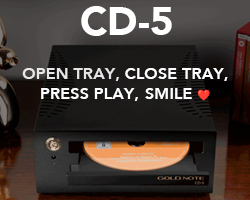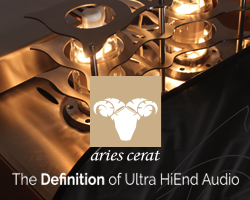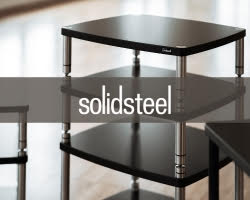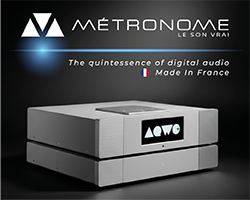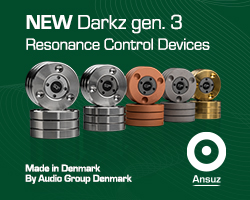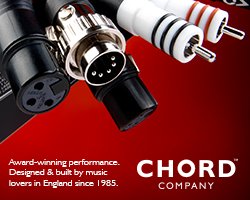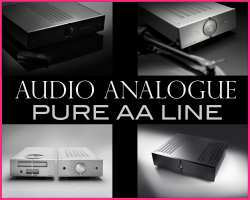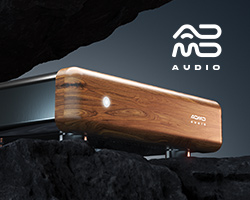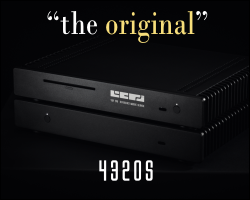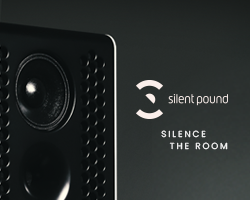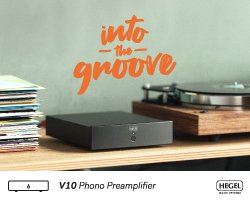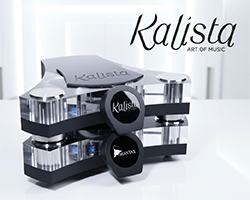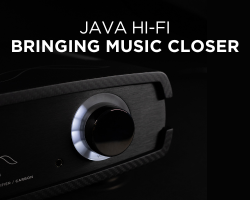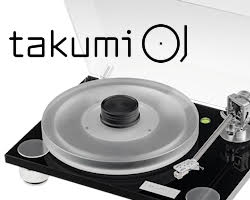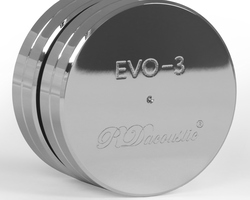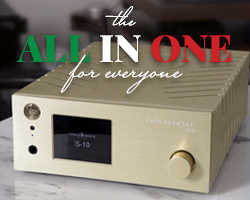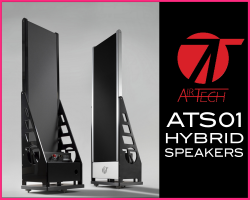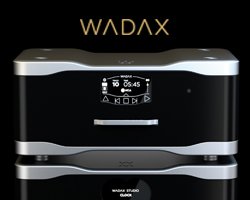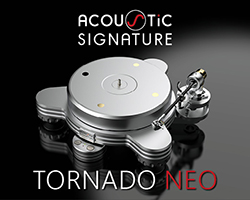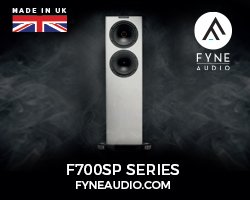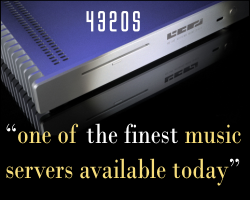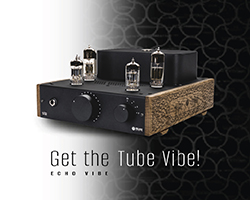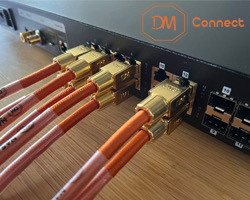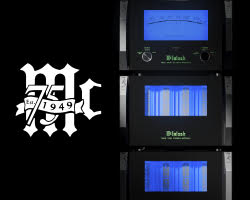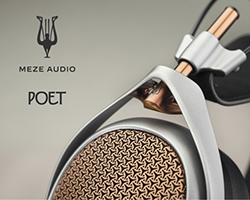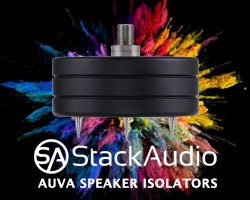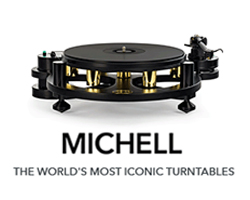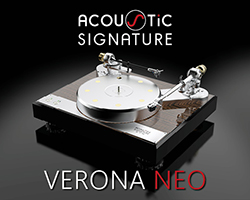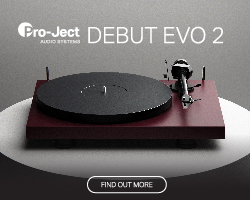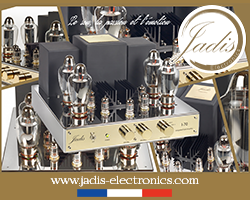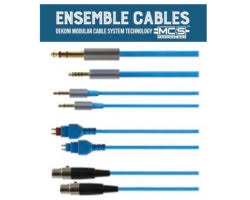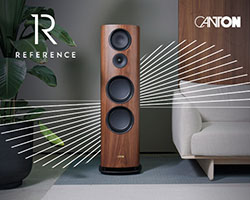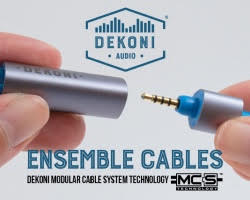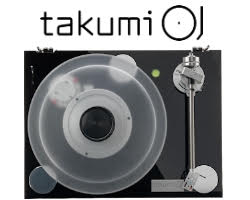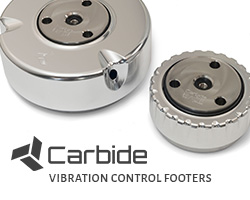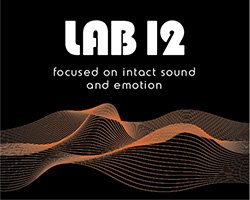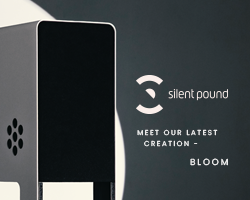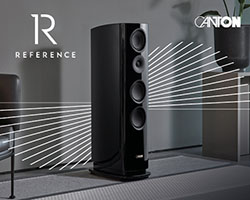MANUNTA CLASSIC INTEGRATED AMPLIFIER REVIEW
Manunta Classic integrated amplifier comes from the same people who brought us M2Tech. In this review for HiFi PiG, Janine Elliot takes a listen to this classic-looking Italian integrated amplifier costing around 5000 Euros.
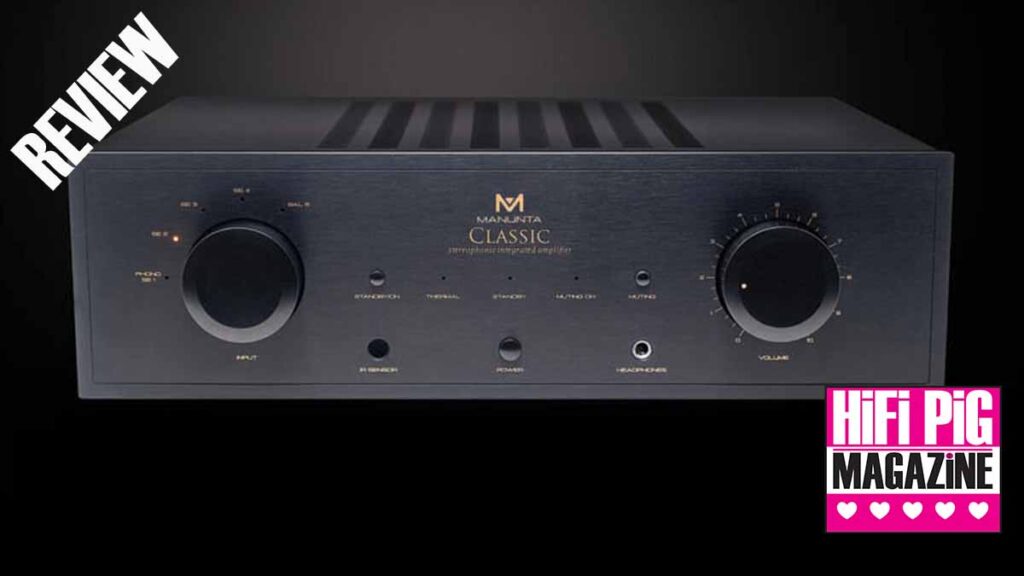
Manunta is a HiFi manufacturer from Italy, and a new company for me, despite their combined experience in manufacturing going back three decades. Part of the M2Tech brand, the company was founded in 2007 by Nadia Marino and Marco Manunta. With a love of audio for many years, creating a company of their own was the obvious route to take, and their first big success was the hiFace computer digital audio interface in 2009.
Based in the lovely Italian city of Pisa, they have been creating excellently built and somewhat traditional-looking products. Being sent the €4198 + VAT Classic amplifier, I felt I was back in my youth, where I ogled over the Japanese black and silver audio in the windows of Lasky’s down Tottenham Court Road.
With their full name ‘Manunta by M2Tech’, the company is now well respected, especially for their digital to analogue products, and offers 3 series of equipment plus accessories such as the ‘hiFace Two’ USB DAC for laptops. With the Classic series having its visual roots clearly set in the past, they advertise it as addressing “enthusiasts first and foremost with devices that are traditional in use but have an ultra-modern sound”. The Classic amplifier for review here is designed to provide sound quality “in step with the times but without forgetting the canonical structure of the HiFi system of the past”. Time to put on my Showaddywaddy.
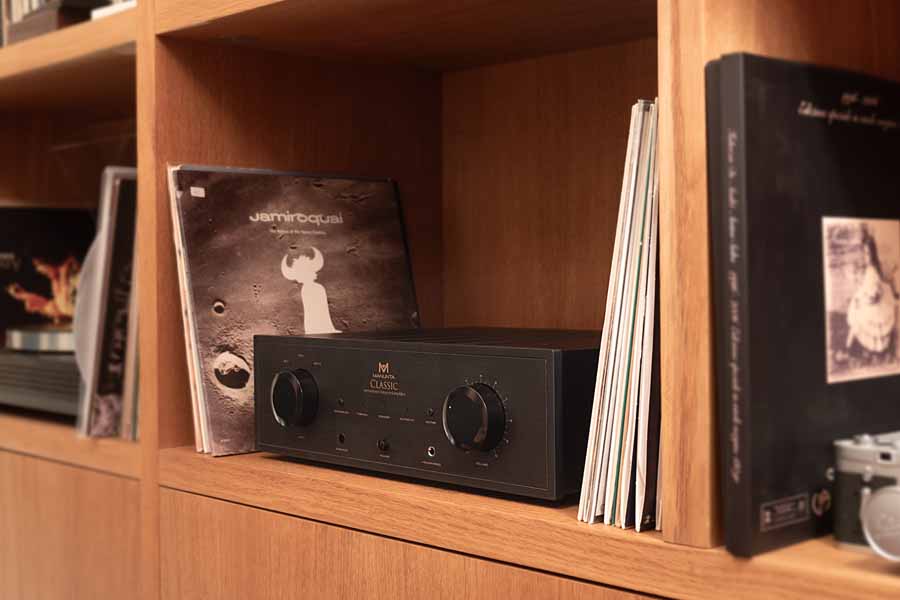
PROTECTION AND POWER CUNUNDRUMS
Retailing at €4198 + VAT, this is not as cheap as those Japanese amps I looked at as a child, but with the inside packed with well-laid-out and labelled electronics and a large toroidal power supply, it shows that things have come a long way over the decades. Marco, who sent the amplifier, did advise me that it is not provided with any electronic protection circuit to limit the output device’s current, so it is therefore advisable to avoid short-circuits on the speaker’s posts. Best, therefore, that I switch off the unit before changing speakers or speakers’ cables. Of course, I would always do that anyway. Manunta’s argument as to their choice of no protection is that it helps deliver a better sound. Indeed, I remember decades ago modifying my own QUAD 405 power amplifier by removing the protection circuits as well as upgrading the capacitors in order to improve on Walker’s design.
Another conundrum was their power output. This amplifier offers 60W RMS into 8-ohms (100W RMS 4-ohms), which is nothing special, but the design of the Classic allows for a large dynamic headroom, meaning that for short bursts of audio (10ms) the output becomes 155W RMS 8-ohms (240W 4-ohms). In layman’s terms, this usually means that a generous power supply allows for a headroom of much higher output bursts. Think Krell, AVID, McIntosh, etc. Marco does things slightly different, as he explained to me.
“This headroom is obtained with a power supply able to deliver a high voltage when the amp is idle or mildly driven, which is the case when listening to music. Peaks in the music are handled by the power supply’s charge reserve, while more continuous, higher loads cause the supply voltage to be reduced. This way we can deliver high peak power without having to oversize the power supply: 240W RMS per channel short-term power using a 225VA power transformer wouldn’t otherwise be possible to achieve”.
The power supply in the Classic has been designed to tightly follow the power requirements of the music programme “without wasting money on uselessly big transformers and bulk capacitors”. This keeps the price within their chosen target range. Was I perhaps reliving my youth and wandering into Dixons to see a Saisho ghetto-blaster that had 2W RMS and quoting 150W peak music output? As they say, the proof is in the pudding, so my listening time would be very important in judging whether this is hot air or hot audio.
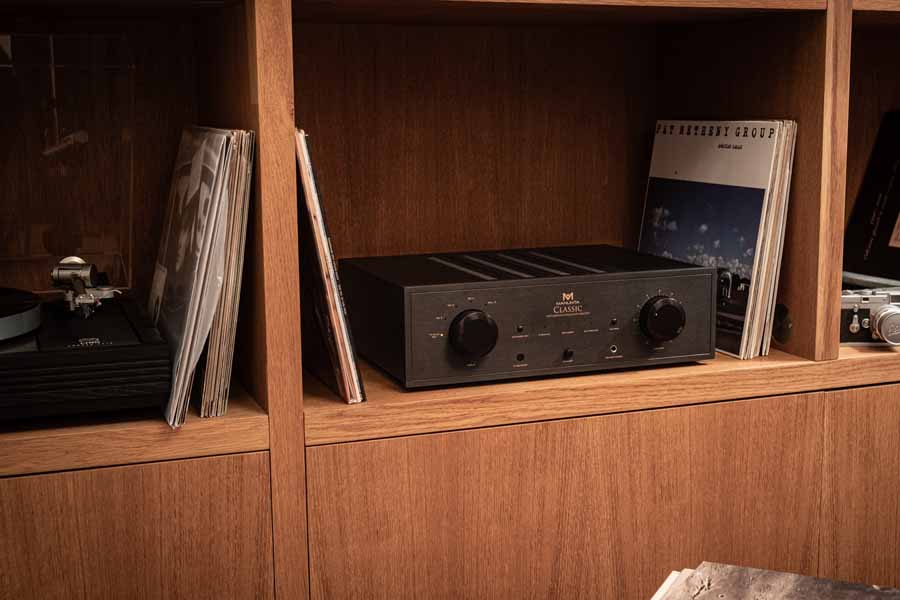
BUILD QUALITY AND FEATURES OF THE MANUNTA CLASSIC INTEGRATED
The Classic series includes a preamplifier and power amplifier, a DAC/Renderer, and this, the integrated amplifier, which really does take me back a few decades with its traditional build and oversized source, volume knobs, and buttons. It similarly comes with an oversized A3 instruction sheet to show the buttons on the front and sockets on the rear, on either side of the sheet.
The amplifier front is really well laid out with the source knob on the left and motorised Alps RK27 volume potentiometer on the right. Input selection uses relays. With small muting and standby buttons plus their relative indicators, there is also a thermal indicator in case the amplifier switches itself off if it gets hotter than 100 degrees C. To fit in with its 20th-century DNA, there is also an off/on switch in the middle front, so no gymnastics before you start listening.
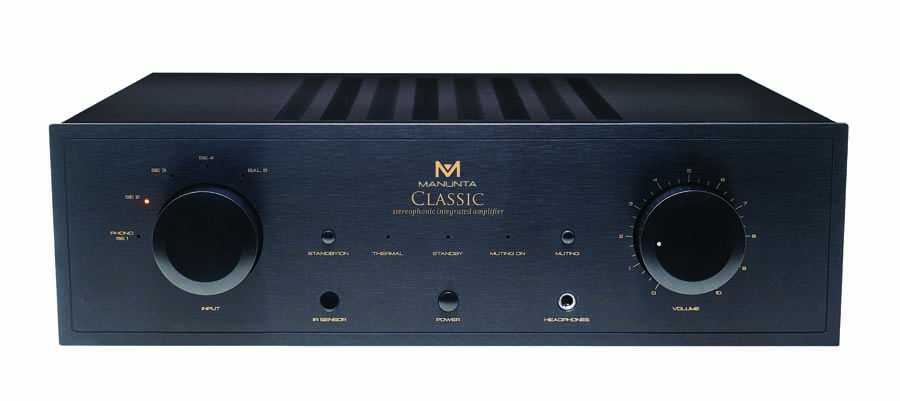
With 3 Single Ended (SE) RCA and a single XLR balanced inputs, it also has an MM/MC phonostage input which, if selected to “line” at the rear, resorts to being a fourth SE RCA line input should you not wish to play records. That phono-stage is, indeed, an important feature of the Classic which, rather than just using a cheap Op-amp, is an in-house design using discrete components. With a ¼” headphone socket and IR sensor window for the supplied remote control, that completes the front. The inside contains a Class-A preamp and B power amp configuration.
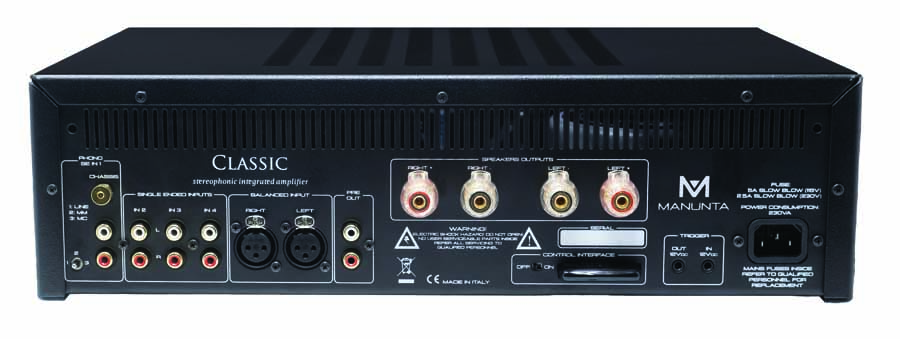
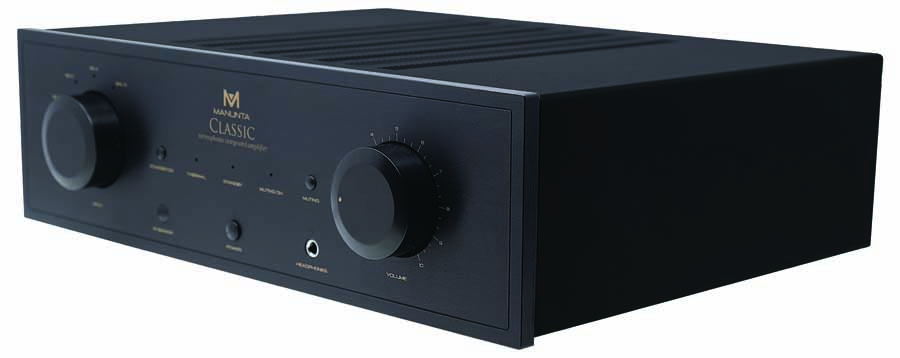
The rear end is well laid out and uses good connectors. As well as the 5 analogue inputs there is the selector switch for choice of line/MM/MC as described above, a pre-out for your subwoofer or external power amplifier (or perhaps your cassette deck input!), plus 12V trigger in/out and serial port. There are no digital inputs, which might please those who like to keep it all…Classic. Interestingly, there is an App for the Classic so that you can also operate the amplifier from your mobile phone using the wi-fi interface if you don’t like the remote. To operate this function, there is an off/on control interface switch on the rear. The universal remote is a Chinese-type variety, which kindly follows my left toggle volume, right toggle source preference, and is actually really pleasing in operation and good looks, too.
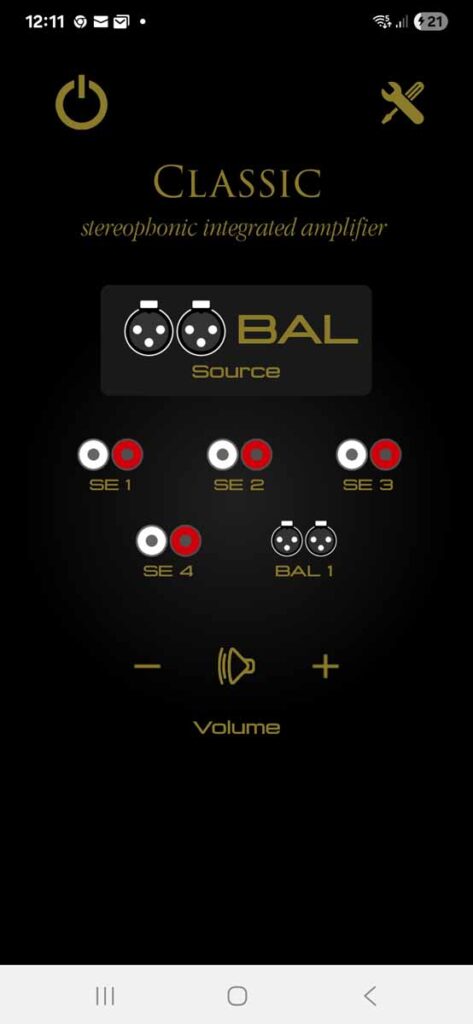
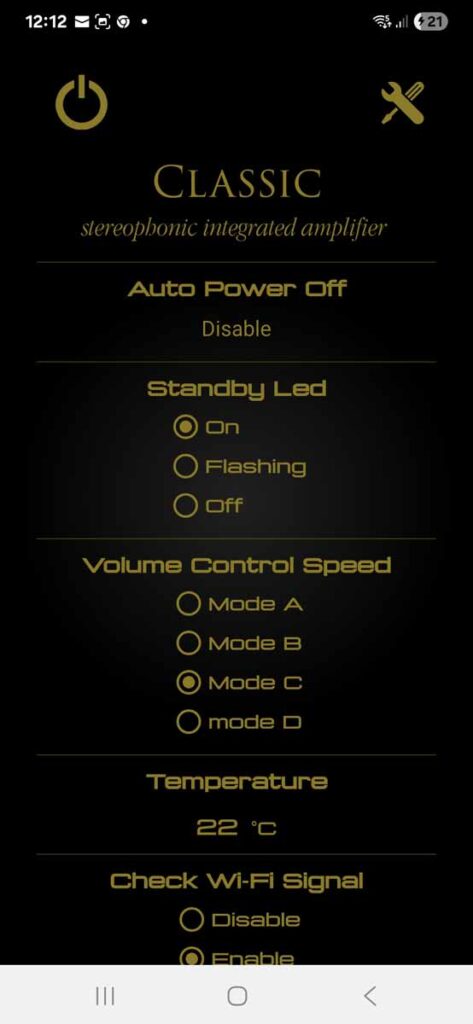
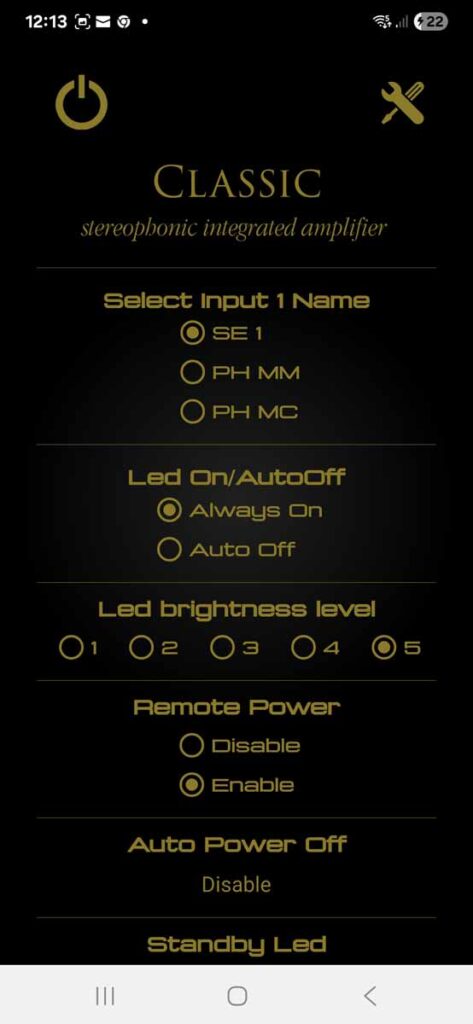
SOUND QUALITY
I really didn’t know what to expect when I switched on, and my hypothesis might suggest I was going to be disappointed. Wow, was I in for a shock, and have to eat my words. This amplifier is not only a very solid-looking unit, but it is a solid performer, too.
I had only just finished reviewing a “baby” D’Agostino amplifier at a mere £24,000, which knocked my socks off, but this amplifier knocked everything else off as well. For a start, that 60W/155W conundrum was quickly answered; this is a very powerful amplifier! I really didn’t need to turn up the wick more than 20%. This motor certainly has twin turbos, well, maybe even a few more. The bass was well-formed and assertive, and the top end sparkled like the D’Agostino. OK, I wouldn’t suggest it is in the same territory as my own Krell or the D’Ago, but it was certainly getting close.
With classic looks, this amplifier had a classic performance, but just faster than my 1970s amplifiers.
I had to start with Patricia Barber, of course, as these live albums particularly have a lot of excitement, speed, bass extension, clean vocals, and fast transients, to really put an amplifier through its paces. “Mourning Grace” was performed with a great bass line and precision cymbals. The slightly different close-mic’d track “Romanesque” showed that the amplifier was very accurate in what it fed to my LS5/9s. Those tight drums were equally clear in Webster Lewis’s “Do You Believe?”. I didn’t know whether to believe in this amplifier before I switched it on, but I certainly do now. With low reverberation in this live “lounge” recording at Club 7 in Norway, the music was tight and perfectly controlled, with the repeated organ riff even coming across with slight distortion, which was in the recording itself; the sine and square-waves from the organ can often sound congested, so it was excellent that I could hear the imperfections.
Another live recording I love to play is the Fink ‘Wheels Turn Beneath my Feet’, a set of recordings from several different locations. The audience is very clear, and the cymbals exceptionally tight. This amplifier really doesn’t fret, and whilst it is called the Classic, it really does employ new ideas in creating an honest and believable performance. The bass drum in “Biscuits” is tight and doesn’t stick out like some amplifiers can create. Similarly, in the start of “Blueberry Pancakes”, that bass line is equally solid and – considering there was no click-track – perfectly timed, too.
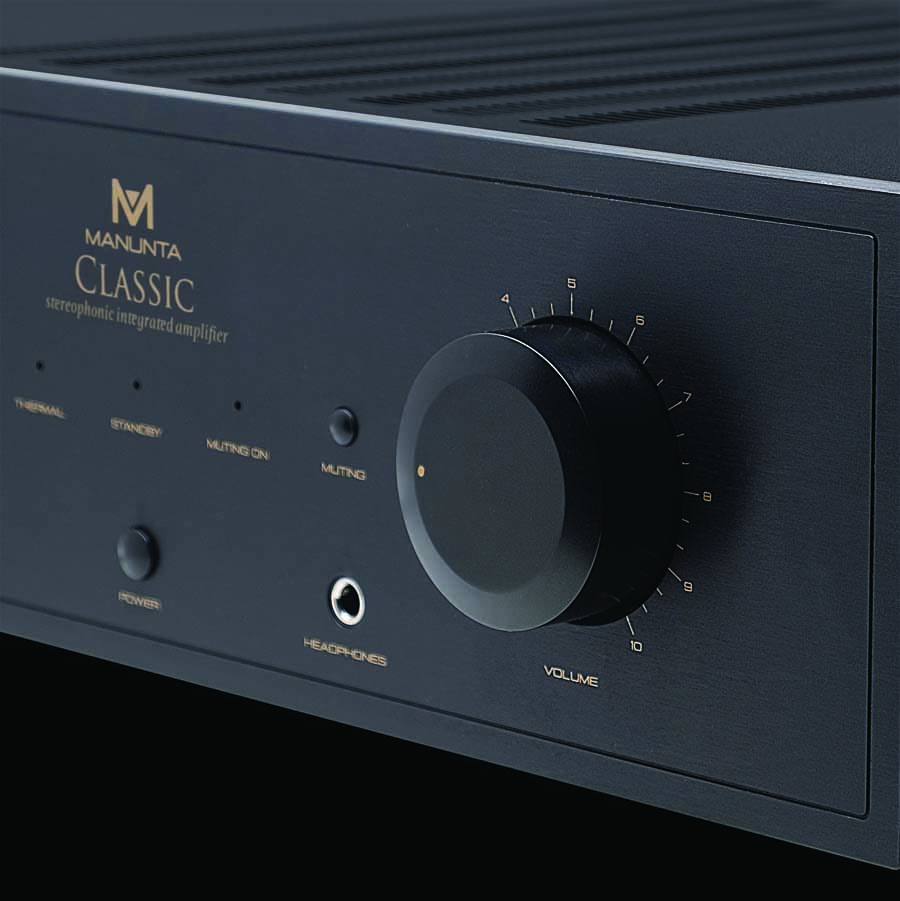
Using my Bluesound NODE and RCA to XLR leads I decided to play some 1970s tracks to take me back to classic pop music of the era. TRB’s 1977 “Grey Cortina” was first on, and I have to admit the recording is absolutely awful; the Manunta really doesn’t hide imperfections like many lesser amps might. Suddenly, the stereo spread shran,k and the sound quality was equally bad. “Too Good to be True” was equally too bad to be true.
I remember going in a grey Cortina Mk2 estate to The Marquee in West London in the ’70s to hear After the Fire, a kind of punk/Prog Rock group with the excellent Peter Banks on synthesizers. His playing is absolutely amazing, though he had to change his name to “Memory” Banks to prevent confusion with the ex-YES guitarist with the same name. The Classic was very precise in its capture of the analogue keyboards and the drummer Ivor Twiddell, twiddling away with tons of energy. However, apart from one album they did (‘Der Kommissar’), that sound was always disappointing to me, though I loved (and still love) the music. I’m not sure why the 1970s studio recordings varied so much in sound quality, but going further back to the 50s and 60s, the recordings invariably just seemed so much more believable, even in mono.
Nat King Cole’s 1962 “Let There Be Love” with George Shearing on piano was quite simply recorded with passion. This and “September Song” were vocal treacle through the Classic. I could almost eat the music as it was just so sweet and professionally engineered by men in bow ties…probably. This music is as timeless as the Manunta Classic itself. With the warmth and classical sound characteristic of the full-bodied double bass, it was most likely that an RCA 44BX ribbon microphone was to have been used. That mic and this amplifier controlled the lower frequencies brilliantly.
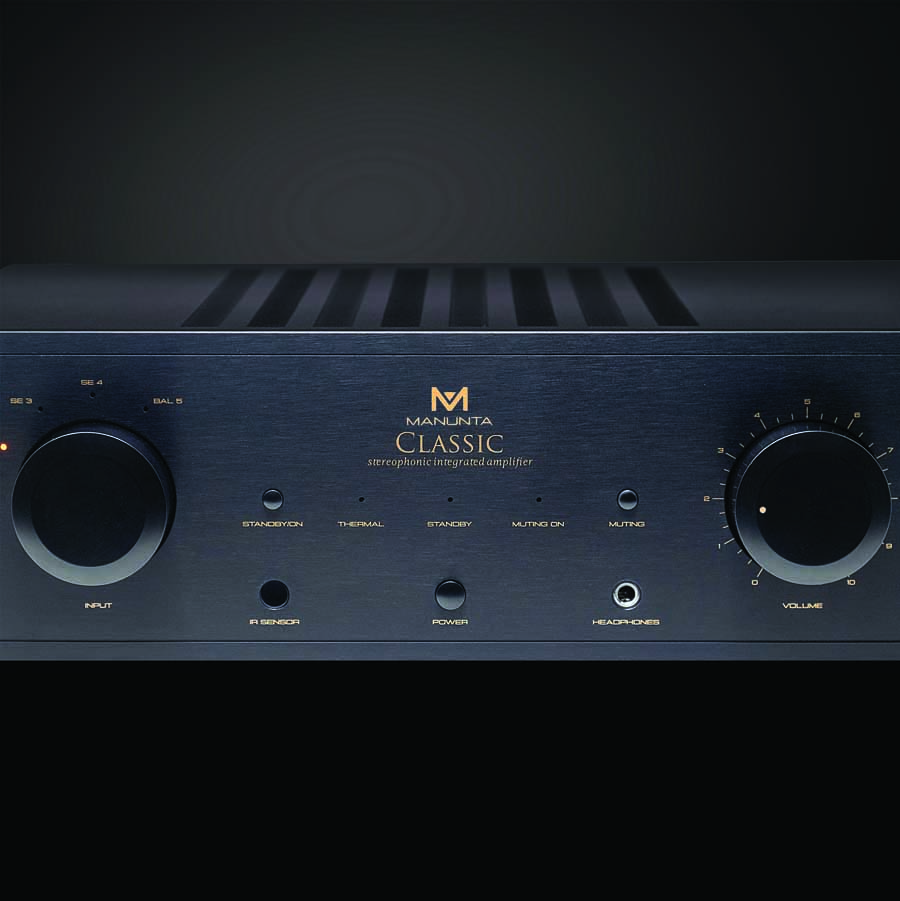
The brand-new re-release of ‘Buckingham Nicks’, a 1973 album from Stevie Nicks and Lindsey Buckingham (of Fleetwood Mac fame) was refreshingly tighter, and the instrumental track “Stephanie” with its acoustic guitars was carefully positioned across the soundstage.
With classical music, I decided to listen to Stephane Deneve conducting the St Louis Symphony Orchestra with the ‘Concerto for Orchestra’ from Kevin Puts. The American composer is perhaps best known for his strong operatic work, but this 6-movement orchestral bonanza is similarly recorded with passion and tons of percussion, brass, strings, and wind. The strong timpani really fills the room with authority, and the brass is tight and very controlled.
Turning to vinyl, I began with the track “Flickers” from the 45rpm double album “If You Wait” by London Grammar. With strong bass, especially the really deep bass drum thuds, the discrete phono-stage gave a very flat frequency response across the whole soundstage. This is a very quiet amplifier, especially on MM, and I didn’t even need to use the earth linkage from my turntable, as there was absolutely no hum. The vocals were very strong, and Hannah Reid’s excessive reverberation was like treacle. The performance from the Moving Coil input was tight, and the thick-timbre’d sound-engineering was perfectly performed by the amplifier. Indeed, in “Nightcall,” you could almost tuck me in a heavy blanket for the night! I say heavy blanket for a reason; the bass can perhaps be a little overpowering at times. As there is no adjustment for load impedance, different cartridges will, of course, perform differently.
The Classic gives a very easy-listening performance, though still with great speed and detail. The company’s motto is “Designed for Music”, similar to Spendor’s “Made for Music” or Cambridge Audio’s “Made by Music” (and probably many more), but this manufacturer really has a product that is designed for you to simply enjoy your music. I really felt I could get close to the performance, whatever genre of music I played.
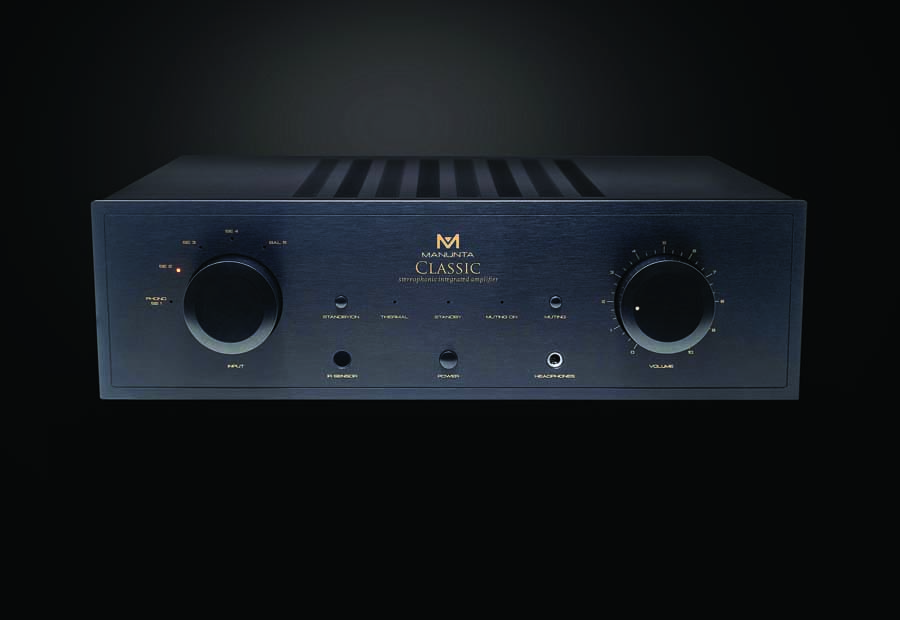
The slushy strings in this and Sibelius’s Karelia Suite (Academy of St Martin-in-the-Fields, Sir Neville Marriner) were here to enjoy. The latter opens with quiet brass, strings, and drum-roll, with lots of atmosphere before all musical hell gets let loose. This might be a slow performance, but the Classic keeps it all well controlled and fluid. There is plenty of detail in the strings’ semiquavers and positive drum beats and pin-sharp cymbals. The more forceful third movement, “Alla Marcia,” was very clear and assertive, and the Classic performed it all with ease. Only that the bass was slightly slower, and on headphones a little too obvious, this amplifier would have got my thumbs up as one of the very best Integrated’s I have heard. The instruments were clearly positioned and music clearly executed in “The Swan of Tuonella”, with its forward cello and oboe solos and clean bass drum rolls.
If you want to just listen to music, this amplifier is great, but if you simply want to analyse every bar of the music, then perhaps not. The remote was easy to use, and the Android/iOS app was useful, too. Here, as well as volume and source changing, you can even find out the temperature of the amplifier (for me it was 22 degrees, so not as hot as the performance) and even change the speed of the up/down volume control!
QUIBBLES
There was very little for me to quibble about this amplifier, as it worked so well. The headphone output was its weakest point. Whilst having Wi-Fi for the App, there are no digital inputs, and whilst it is designed to be traditional in operation, I think just a modicum of modern mods, be it just to play downloads from your phone, would have been useful (just as QUAD and others have allowed 21st century convenience into their retro comebacks).
CONCLUSION
This is a new manufacturer for me, and I really didn’t know what to expect. I was very impressed, not only by the power reserves, but also by the traditional looks hiding the inherent speed and detail of modern designs. I found long listening sessions were full of fun and full of musical coherence. If you can get hold of one of these, I think you will be highly impressed.
And to answer my original question, yes, this amplifier is hot audio!
AT A GLANCE
Build Quality:
Traditional looks but hiding some great Class A/B engineering
Sound Quality:
Detailed bass power and a fast, tight top end, with a great phono-stage
Value For Money:
Around £5000 gets you a really able integrated amplifier, complete with an MC/MM phono-stage that deserves a box of its own
We Loved:
Excellent resolution of music
Gutsy amplification with great musicality
Sweetness that made music of all genres sound good
We Didn’t Love So Much:
Wish there was a digital input.
Elevator Pitch Review: I have not heard products from this manufacturer before, so I listened with no preconceptions apart from some confusion as to power output. Words are less meaningful than the music, luckily, so I was totally washed away by the 21st Century performance of this Class integrated with its visual roots set firmly in the 20th century.
This had more musicality, power, and energy than a few amplifiers I have reviewed at four times the price, so I wish I had actually heard about Manunta back in 2007.
Janine Elliot
System Used
Bluesound NODE and Qobuz (digital streaming); Pre-Audio GL-1102N/Ortofon Kontrapunkt b (turntable); Krell KPS20i (CD); Graham Audio LS5/9 plus Townshend Supertweeter (loudspeakers); Tellurium Q and Townshend cables, Coppice Audio stand and Townshend rack.
SUPPLIED SPECIFICATIONS
Sensitivity
230 mV RMS (line inputs)
5 mV RMS (MM phono input)
0.6 mV RMS (MC phono input)
9-15 V (trigger)
Input impedance:
47 kOhm (single-ended and phono)
20 kOhm (balanced)
Signal to Noise Ratio:
105 dBA (60W RMS output power into 8 Ohms, line)
85 dBA (60W RMS output power into 8 Ohms, MM phono)75 dBA (60W RMS output power into 8 Ohms, MC phono)
THD+N:
0.02% (1 kHz, 60W RMS output power into 8 Ohms)
Inputs:
1 MM phono / MC phono / line (RCA)
3 single-ended line (RCA)
1 balanced (XLR)
1 trigger (3.5mm jack)
Dimensions
420x313x120mm (LxWxH)
Weight:
net 15.0 kg (including accessories)
gross 18.0 kg
Continuous output power before clipping:
60W RMS per channel (stereo, 8 Ohm)
100W RMS per channel (stereo, 4 Ohm)
Dynamic output power (10ms):
155W RMS per channel (stereo, 8 Ohm)
240W RMS per channel (stereo, 4 Ohm)
Dynamic Headroom:
4.2dB (stereo, 8 Ohm and 4 Ohm)



























































